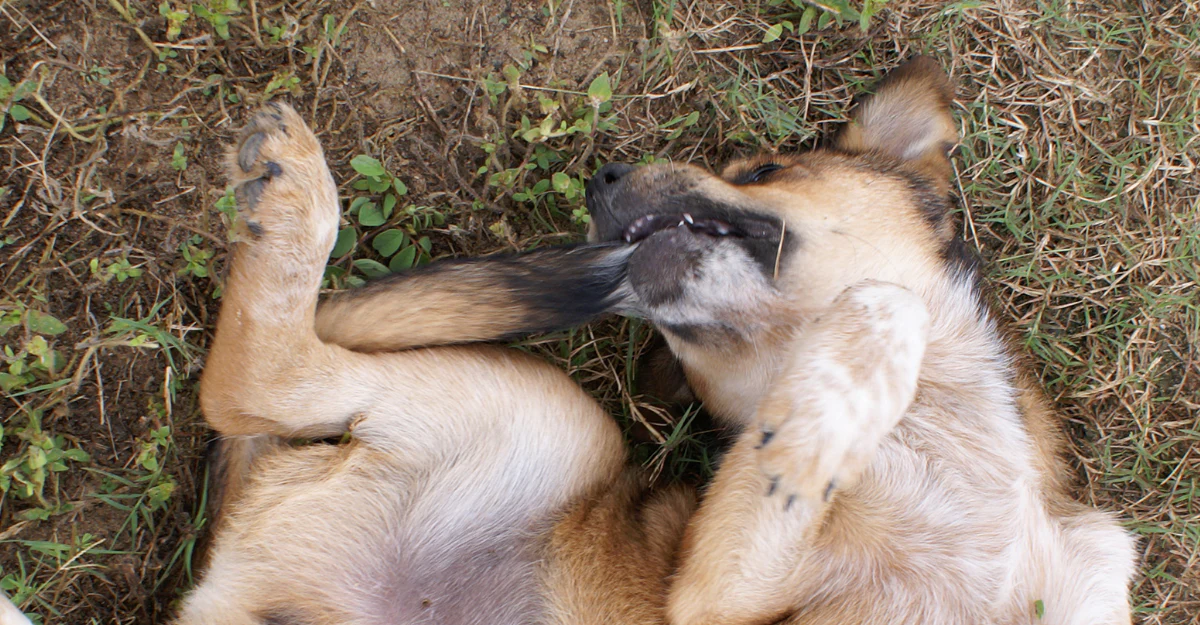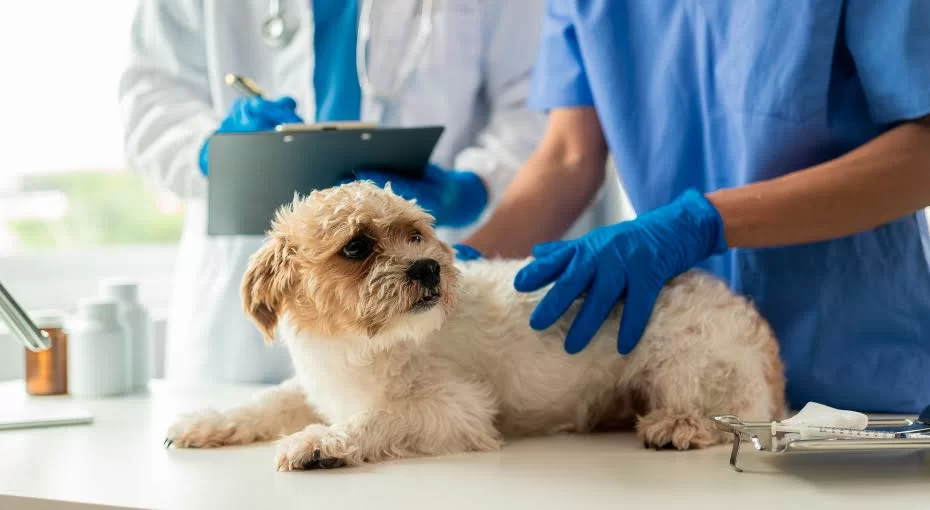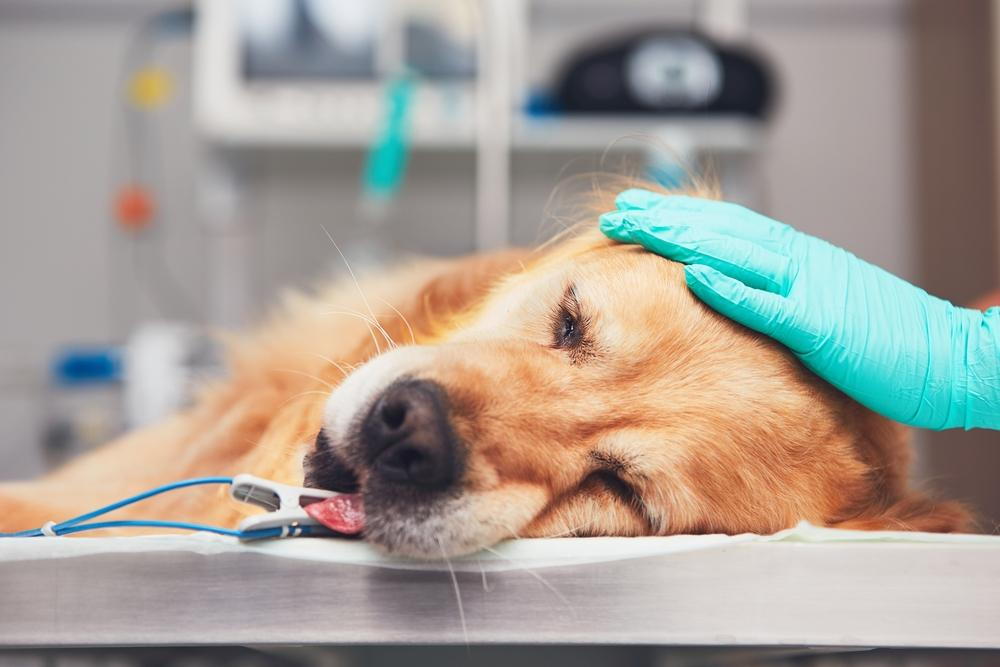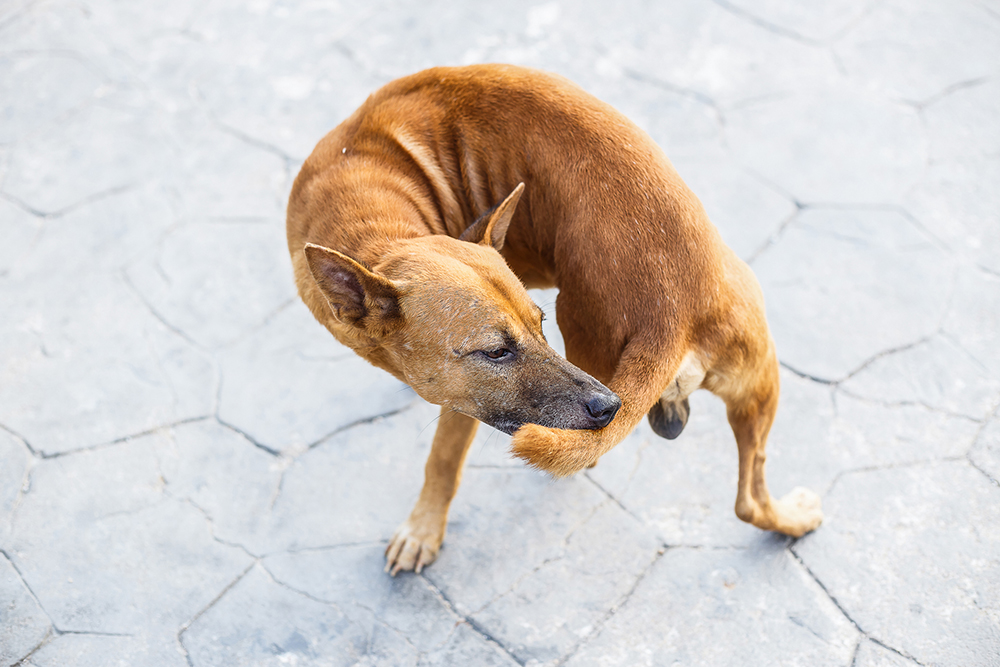I’ve noticed my dog can’t seem to leave his tail alone and it’s got me worried. Watching him spin in circles or gnaw at his tail makes me wonder what’s really going on. Is he just bored or is there something more serious I should know about?
When a dog starts chewing his tail it’s not just a quirky habit. It could be a sign of discomfort stress or even an underlying health issue. I want to understand what’s driving this behavior so I can help my furry friend feel better and stop the tail-chasing madness.
Common Reasons Why Dogs Chew Their Tails

Common-Reasons-Why-Dogs-Chew-Their-Tails
Tail chewing connects to many issues, from simple discomfort to serious medical conditions. I trace specific triggers to better address my dog’s needs and find the source of his tail-chewing habit.
Allergies and Skin Irritations
Environmental allergens, food sensitivities, and contact irritants top the list of triggers that make my dog’s skin itch. Chewing follows when my dog reacts to pollen, grass, dust mites, or fleas. Redness, rash, or visible sores usually accompany tail chewing due to allergies.
| Allergen/Irritant | Typical Signs | Seasonality |
|---|---|---|
| Pollen | Itching, redness, chewing | Spring/Fall |
| Fleas | Tail base biting, hair loss | Year-round |
| Food | Generalized itching, diarrhea | Year-round |
| Grass | Localized rash, licking | Spring/Summer |
Parasites and Infections
Fleas, mites, or ticks often cause tail discomfort. I also watch for secondary bacterial or yeast infections that follow intense scratching. Warning signs include crusty patches, odor, pus, or blood around the tail.
| Parasite/Pathogen | Chewing Behavior | Secondary Signs |
|---|---|---|
| Fleas | Tail base gnawing | Small black specs |
| Ticks | Localized chewing, swelling | Lumps |
| Mites (e.g. mange) | Intense biting | Scabs, hair loss |
| Yeast/Bacteria | Persistent chewing | Odor, discharge |
Anxiety and Boredom
Compulsive chewing sometimes results from mental stress or boredom. When I notice my dog chewing his tail during long periods alone or after changes at home, I suspect anxiety. Increased vocalization, pacing, or destruction elsewhere corroborates emotional causes.
| Trigger | Context Observed | Associated Signs |
|---|---|---|
| Separation anxiety | When left alone | Whining, pacing |
| Environmental change | New home, routine changes | Restlessness, chewing |
| Lack of stimulation | Few walks, no toys | Chewing objects, tail |
Medical Conditions
Underlying health conditions like impacted anal glands, orthopedic pain, or neurological issues frequently manifest as tail chewing. When basic causes don’t explain the behavior or I spot swelling, bleeding, or mobility changes, I consider a veterinary exam necessary.
| Condition | Chewing Clues | Other Indicators |
|---|---|---|
| Impacted anal glands | Licking/chewing near tail | Scooting, foul odor |
| Orthopedic pain (arthritis) | Chewing at tail/back legs | Limping, reluctance to move |
| Neurological disorders | Uncontrollable chewing | Weakness, balance problems |
How to Identify the Cause
I look at specific patterns and symptoms to pinpoint why my dog chews his tail. Accurate identification helps me address both immediate discomfort and underlying problems.
Observing Behavioral Patterns
I check if my dog’s tail chewing aligns with environmental changes, stress, or periods of boredom. Signs include increased chewing during loud noises, when left alone, or after outdoor play. Physical clues such as redness, hair loss, itching at the tail base, or visible wounds also indicate external triggers.
Common Physical and Behavioral Signs Table
| Sign | Possible Cause | Example Scenario |
|---|---|---|
| Redness/Itching | Allergies, parasites | Dog chews after grass exposure |
| Hair Loss/Sores | Chronic skin irritation | Area around tail loses fur |
| Restless Behavior | Anxiety, boredom | Chewing increases when left alone |
| Sudden Occurrence | Injury, acute pain | Tail biting starts after accident |
Consulting a Veterinarian
I consult my veterinarian if I notice ongoing chewing, wounds that don’t heal, or sudden changes in behavior. The vet checks for skin infections, parasites such as fleas or ticks, and possible injuries. Diagnostic steps could include allergy testing or sample analysis.
Veterinary Diagnostics and Treatments Table
| Step | Purpose | Example Procedure |
|---|---|---|
| Physical Exam | Identify visible problems | Inspect tail wounds |
| Parasite Check | Detect fleas, ticks, mites | Flea comb, skin test |
| Allergy Testing | Find triggers for skin reactions | Blood or patch test |
| Medication/Topical Care | Relieve symptoms, treat causes | Antibiotics, ointments |
| Behavioral Guidance | Reduce anxiety/boredom triggers | Training, enrichment |
I track changes post-treatment through routine checkups, allowing the vet to adjust or combine therapies for my dog’s needs.
Ways to Prevent and Treat Tail Chewing

Ways-to-Prevent-and-Treat-Tail-Chewing
Prevention and treatment for tail chewing in dogs depend on the root cause, whether it’s medical or behavioral. I address each with targeted strategies to improve my dog’s comfort and well-being.
Home Remedies and Behavior Modification
For mild cases and behavioral causes, I use at-home measures to reduce my dog’s tail chewing.
- Maintain a flea-free environment using regular cleaning and vet-approved preventives—for example, monthly spot-on treatments.
- Provide a balanced diet rich in omega fatty acids, like fish oil supplements, to support skin health.
- Offer consistent exercise and interactive toys (like puzzle feeders or treat-dispensing balls) to prevent anxiety and boredom.
- Use dog-safe anti-itch shampoos or sprays containing oatmeal or aloe to soothe minor skin irritations.
- Keep my dog’s tail clean and groomed, trimming fur and inspecting for small wounds or ticks.
- Redirect chewing behavior with training commands and by rewarding positive behaviors.
Common Home Remedies Table
| Method | Purpose | Example |
|---|---|---|
| Flea prevention | Decreases parasite itching | Monthly topical medication |
| Omega-3/fatty acid supplements | Improves skin barrier | Fish oil capsules |
| Regular exercise | Reduces stress/boredom | Daily leash walks, fetch games |
| Anti-itch shampoo/spray | Soothes skin irritations | Oatmeal dog shampoo |
| Grooming and inspection | Detects/avoids surface issues | Weekly brushing, tail check |
Medical Treatments and Professional Help
For persistent or severe tail chewing, I consult a veterinarian to diagnose underlying causes.
- Vets perform exams for allergies, skin infections, parasites, or anal gland problems.
- Prescribed treatments may include oral medications (for infections/allergies), topical ointments, or medicated shampoos.
- If parasites are found, the vet recommends specific flea/tick preventives or dewormers.
- Diet changes may be advised for food allergies, with hypoallergenic or limited-ingredient options.
- For behavioral causes resistant to home strategies, I seek guidance from a certified dog behaviorist for customized therapy and training plans.
Veterinary Treatments Table
| Treatment Type | Indication | Example |
|---|---|---|
| Oral medication | Infections, allergies | Antibiotics, antihistamines |
| Topical ointment | Skin wounds/irritations | Steroid creams, antibacterial |
| Parasite control | Fleas, mites, ticks | Oral flea/tick medications |
| Diet adjustment | Food allergies/sensitivities | Hypoallergenic kibble |
| Behavioral therapy | Compulsive chewing/anxiety | Consultation w/ behaviorist |
Regular grooming, flea and tick control, and timely veterinary care help me address both medical and behavioral triggers for tail chewing.
When to Seek Immediate Veterinary Attention

When-to-Seek-Immediate-Veterinary-Attention
I observe my dog for certain signs that signal prompt vet care is critical. Persistent, severe tail chewing—especially when it creates redness, hair loss, sores, or a foul odor—requires immediate attention. Suspected injuries, like a swollen or painful tail, or changes in walking and sitting behavior, indicate the need for urgent assessment. Visible worms in feces, vomiting, diarrhea, or rapid weight loss suggest internal parasites and prompt a vet visit. Compulsive tail chewing linked to anxiety or behavioral issues that I can’t stop at home also demands professional intervention.
Table: Signs That Require Immediate Veterinary Attention
| Observed Symptom | Related Concern | Example Context |
|---|---|---|
| Redness, sores, or foul odor on tail | Infection or serious injury | Open wounds, swelling, pus, strong smell |
| Worms in feces, vomiting, diarrhea | Parasite infestation | Visible worms, sudden gastrointestinal upset |
| Swelling, pain, abnormal gait | Dislocation or fracture | Limping, inability to wag tail |
| Persistent, compulsive chewing | Severe behavioral disorder | Chewing continues despite retraining |
| Sudden changes in behavior | Acute medical issue | Withdrawal, aggression, loss of appetite |
I consult a veterinarian promptly if I observe any of the above. Vets may use physical exams, skin and fecal tests, or X-rays to diagnose and recommend treatments, often combining medications, wound care, or behavioral therapy for a comprehensive approach.
Table: Veterinary Diagnostic and Treatment Options
| Veterinary Test | Problem Screened For | Common Treatments |
|---|---|---|
| Physical exam | Injury, infection | Wound care, antibiotics, pain relief |
| Skin scraping/test | Parasites, allergies | Anti-parasite meds, allergy management |
| Fecal analysis | Internal parasites | Dewormers, supportive care |
| X-rays | Dislocation, fracture | Splints, surgery, pain management |
| Behavioral assessment | Anxiety, compulsions | Behavioral therapy, anti-anxiety meds |
Continuous monitoring and early veterinary care for these symptoms improves recovery outcomes in dogs displaying tail chewing behavior.
Conclusion
Watching my dog chew his tail can be worrying but I’ve learned that paying close attention to his habits and physical signs is key. Every dog is different so what works for one may not work for another. I’m always ready to seek professional help if things don’t improve or if I notice anything unusual. By staying proactive and informed I can help my dog feel more comfortable and keep his tail healthy and happy.
Frequently Asked Questions
Why does my dog chew or chase his tail?
Dogs may chew or chase their tails due to boredom, allergies, skin irritations, anxiety, parasites like fleas or ticks, or underlying medical conditions such as impacted anal glands. Observing your dog’s behavior and any related symptoms can help identify the cause.
When should I worry about my dog’s tail chewing?
You should worry if your dog’s tail chewing leads to redness, sores, hair loss, foul odors, or if there are sudden behavioral changes. If home remedies do not help or you notice these symptoms, consult your veterinarian promptly.
Can allergies cause my dog to chew his tail?
Yes, allergies—whether from food, environment, or parasites—can cause itching and irritation that lead your dog to chew his tail. Look for signs like redness, rash, or frequent scratching along with tail chewing.
How can I tell if it’s anxiety or stress making my dog chew his tail?
If your dog starts chewing his tail during times of loud noise, separation, or changes in the environment, anxiety or stress may be the cause. Compulsive or repetitive chewing often points to a behavioral issue.
What are some effective home remedies for mild tail chewing?
For mild cases, keep your dog flea-free, maintain a balanced diet, provide regular exercise, and use dog-safe anti-itch products. Redirect their attention with toys or basic training commands to discourage tail chewing.
When should I take my dog to the vet for tail chewing?
See your vet if the behavior is persistent, wounds won’t heal, there is excessive redness or swelling, or if your dog shows other signs like vomiting, diarrhea, weight loss, or visible worms. Prompt veterinary care is important for severe symptoms.
What will the veterinarian do to diagnose the cause?
The vet will conduct a physical exam, check for parasites, assess your dog’s skin and anal glands, and may perform allergy tests or other diagnostics based on your dog’s symptoms to identify the underlying problem.
How are medical causes of tail chewing treated?
Treatment depends on the cause but may include oral or topical medications, dietary changes, parasite control, or specific treatments for medical conditions. Your vet will create a plan tailored to your dog’s needs.
Can tail chewing be completely prevented?
While not always preventable, regular grooming, effective flea and tick control, a healthy diet, plenty of exercise, and addressing anxiety can greatly reduce the risk of tail chewing in dogs.
Is it normal for puppies to chase their tails?
Occasional tail chasing is normal in puppies as a play behavior. However, frequent or intense tail chewing, especially if it results in wounds, is not normal and should be monitored closely.

